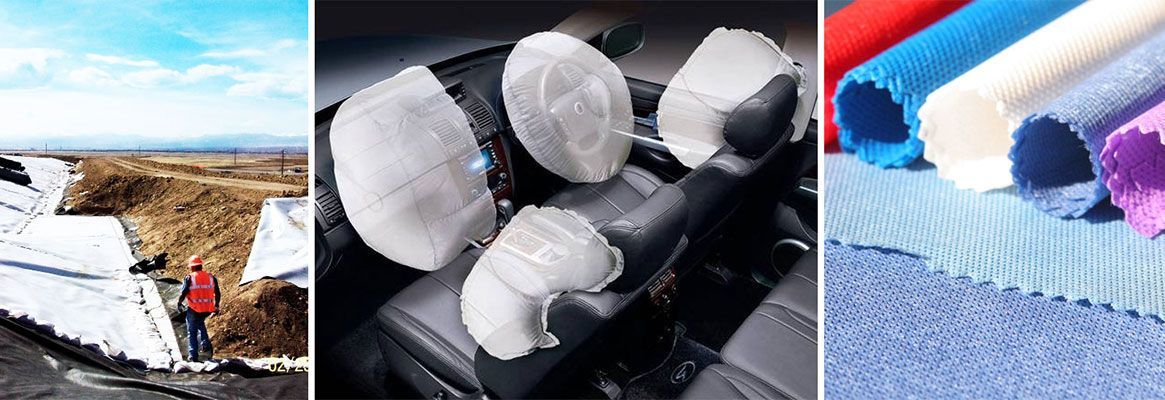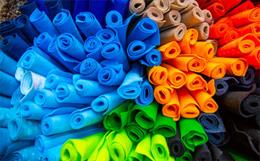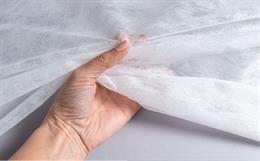NonwovensIndustry:
Thenonwovens industry is made up of a number of SMEs mainly privately owned. Theymanufacture products for insulation, filtration, geotextiles, hygiene, bedding,furnishing etc. Although there is a diversity of products there are many commonissues across the industry. These are summarised below.
Productioncosts:
Oneof the key issues is competition from lower cost imports. Some of these importsare of good quality but others often do not meet the necessary technicalspecifications but are still purchased on the basis of price alone. The localcompanies believe that they can successfully compete with imports based onquality, local after sales support and expertise, logistics and responsivenessas well as superior performing products. Nevertheless there is a relentlesspressure on production costs.
Althoughlabour costs generally only represent around 10 to 15% of nonwovens productioncosts whereas input fibre materials are around 50%. The nonwovens industry isalso very capital intensive and to be successful companies must maximiseproduction through their machinery whilst minimising labour, material costs(including minimising wastage) and energy and other utility costs. In addition,for many companies their business is made up of short product runs which leadsto low machinery utilisation putting them at a disadvantage compared tooverseas companies. Whether companies have short or longer product runs thereis an ongoing need to increase production rates through their machinery toachieve a good return on capital investment as well increase productivity perperson employed. A crucial element of a successful nonwovens manufacturingbusiness is to have an appropriate sized manufacturing operation for the sizeof the market being serviced. Although this may seem obvious it is not easilyachieved in the nonwovens industry because of its capital intensive but shortrun multiple product nature. Other issues such as number of product lines andstock holdings, transport costs and utility costs are also crucial to asuccessful business.
Value addition:
Nonwovenproducts are often highly specified yet relatively low value-added products andtherefore margins are often very tight. It is a globalised industry andcompetition is fierce. Improving product performance including incorporatingnew features is crucial to staying in business besides continually look to findinnovative ways of adding value.
Sustainablemanufacturing: A global trendaffecting all manufacturing industries is the trend towards sustainablemanufacturing processes. For the nonwovens industry, some product lines alreadyhave "green" credentials whereas for others it is of no importance.However, there is a clear move in the industry to use recycled polymer andfibres, move to zero waste manufacturing and reduce energy and water inputs.Whether this is driven by changing attitudes from customers or simply the needto reduce costs there will be a continuing trend towards sustainablemanufacturing.
It is important for the nonwovens industry to continually lower production costs, add value to their products and make the industry more eco-efficient. The key technology areas which are necessary to achieve these goals are 'Process development; Materials development; Knowledge management, digital and lean manufacturing; Material, energy and water utilisation.
The industry has been driven by Process development and there are now many options for producing nonwoven products. The nonwoven companies mainly use carding to produce fibre webs and bond the web thermo bonding, needle punching or hydro entanglement. Spun bonding melt blowing are also used extensively. It is likely that nonwoven process will continue to evolve and the industry will have to carefully consider what investments should be in equipment to maintain or improve their global position. Increased productivity, processing of finer fibres, novel surface treatments and the production of novel three dimensional structures will lead to reductions in processing costs and the opportunity for more value added products.
Material costs can represent as much as 70% of the cost of nonwoven roll goods. Obviously Material developments will affect production costs and the performance of the nonwoven product. The materials used will also control the biodegradability and recyclability of the product. There is a reasonably level playing field in terms of fibre costs as most nonwoven manufacturers can source the same fibres from the same fibre producers around the world. Developments will therefore focus more on added value achieved through smart structures and chemical treatments which impart novel properties to the product or significantly reduce the weight of material necessary to meet performance requirements. Material development will lead to lighter weight, smarter products that better meet end user needs and may open up opportunities for the supplier to offer a service as well as a product. Over time there will be increasing pressure to use sustainable materials, design for recyclability and take a whole of life approach to products. This will drive the development of fibres from sources other than hydrocarbons. However in the long term, it will not be sustainable to produce fibres from agricultural products at the expense of food crops.
Of the entire textile manufacturing processes, nonwoven production is the most suited to taking a process engineering approach and utilizing automation, robotics and process monitoring and control. There is an increasing opportunity to apply a form of digital manufacturing to nonwoven production where the final properties of the fabric are entered into a computer and the flow of fibre from blending towers through web production, web bonding and final conversion is computer controlled.
Depending on the number of sensors which can be deployed in the manufacturing process this form of manufacturing can lead to higher quality products and reduced waste. The challenge is in developing sensors which provide the critical on-line measurements of intermediate and final product quality to ensure the process can be optimized and controlled by the digital systems. It is important that the nonwovens industry learns from other industries such as the petro-chemical industry where process control techniques are widely deployed and other manufacturing sectors where lean manufacturing techniques are widely utilised. Knowledge management in terms of benchmarking within and outside of the industry is therefore a key activity to ensure progress is made in manufacturing methods which can be applied to nonwoven production.
In an increasingly resource and carbon constrained world there will be more pressure to reduce energy and water inputs to manufacturing processes into the future.
Although at the moment there are no strong regulatory signals to push companies to produce green products some pressures are emerging from supply chain partners. It is therefore a long term priority to reduce inputs, strive for zero waste and closed loop manufacturing therefore material utilisation and energy and water inputs are important focus areas.
A glance at the research projects being carried out the world over reveals that there is a strong concentration of effort in material science including nanofibres and methods to impart additional functionality to the finished nonwoven. But there is relatively much lesser stress on biodegradability of nonwovens and also on the use of recycled fibres. However, the relationship between processing parameters and the nonwoven structures produced and their properties are well researched. These topics included modeling of nonwoven processes as well as methods to measure nonwoven properties. There is a slow progress reported in new nonwovens machinery or processes.
This research is more likely to be carried out by machinery manufacturers, who have the large resources required, rather than academic institutions. At the moment, it appears that there are hardly any chances in the near future to come across radical machinery developments for the nonwovens industry. The present research is mainly aimed at adding functionality to nonwovens for advanced applications, as well as fundamental studies of process - property relationships.
Clearly global research is concentrated on materials development to enable more functional and therefore more value added products and knowledge management activities such as process modeling, structure-property relationships and new measurement systems. This indicates that these are fertile areas for technology developments. Process developments are likely to be related to nanofibre production or methods of treating fibres to impart new functionalities.
This article was originally published in the November issue of the New Cloth Market: the Complete Textile Magazine from Textile Technologists.








